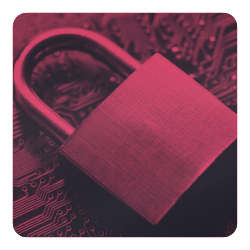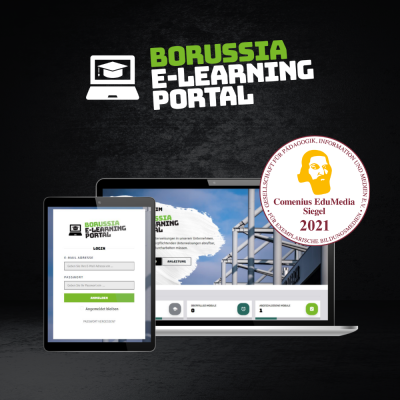How do I become an e-learner?
Unlike at school, e-learners do not need a fixed timetable, a crowded classroom or a teacher. E-learners teach themselves - when, where and at what pace they want. Experts speak of autodidactic learning: They teach themselves something new. We explain how to become an e-learning professional in 10 easy steps.
1. Motivation and Enthusiasm
Our brain rewards us with a cocktail of happiness hormones when we learn something new. This is why learning is fun by nature. If a subject inspires us, we learn with ease. In order to acquire knowledge that does not directly carry us along, we need a little self-discipline and curiosity for new things. If we realize that training helps us to advance in our profession and gives us a competitive advantage, or that it is important for our safety and health, learning becomes easier. An attractive and varied e-learning course motivates its users to take an interest in content that is only now coming into their field of vision.
2. Clear Goals
Every project and therefore every training needs clear goals: Before you start your e-learning, think about what you want to learn, when, with which method and what your goal is. Are you interested in learning a particular skill or in obtaining a certificate? Based on your goals, you can choose all further steps in this direction accordingly and make a binding agreement with yourself or a superior. You will also know exactly when you have reached your goal - and can be proud of yourself.
3. Start
All planning is useless if you do not start. Therefore, the most important step is to set a time when you want to start your e-learning. Think about which course or content you find most exciting and start at exactly this point. The motivation for more advanced or similar topics usually comes automatically once you have started e-learning.
4. Way of learning and methods
Scientists have identified different types of learning - because every brain learns differently. Some people learn better when they hear something, others when they see it in a video or when they read something. Our methods for acquiring knowledge and the mix of knowledge we acquire are as different as we are. Therefore mybreev offers different formats to suit all learning types. Because whoever knows what type of learner he is, can better adapt his e-learning to himself and thus learn even better.
5. Learning Atmosphere
Even if you do not have any fellow learners with e-learning: Create a private classroom and thus an optimal learning environment. Some people need the peace and quiet of a library, others need the creative chaos of a crowded café. Create an atmosphere that supports you personally in your learning. Also make sure you have all the necessary learning materials ready. Do you like to take notes during further education courses? Then make sure you have a pad and pencil for your e-learning course. Whether in the airport lobby, at work or on the couch at home: Find a pleasant learning environment and establish it as your regular place to learn.
6. Time Management
Learning to be self-determined usually also means learning to be self-organised. Those who opt for e-learning and thus for training without travel usually have little time. Therefore, it is important to plan the time for learning firmly into the daily work routine. For example, if you know that you are most receptive in the morning and can learn best in the early morning, plan half an hour every Friday, for example, directly after the first coffee to learn. If you enter this appointment in your public calendar, your colleagues will also see that you are not available at that time. This gives your e-learning the same value and importance that training in an academy or training centre would have.
7. Routines
If no teacher or trainer is looking at your fingers, you need some self-discipline to learn something new. The human brain works most efficiently when it follows clear rules. Therefore, routines help you to learn independently. Create commitments with yourself to acquire knowledge continuously and successfully. Decide whether you want to learn for two hours once a month or for a few minutes every week. No matter which learning method you choose for yourself: Decide on regularity.
8. Exchange
Probably the biggest difference between e-learning and training outside the company is that e-learners usually acquire new knowledge on their own. But even those who learn autodidactically can use the learning process for networking. Many e-learners find the regular exchange with others to be both goal-oriented and enriching. In this way, you expand your network and your horizon and consolidate your new insights by talking about them.
9. Feedback
To ensure that your e-learning courses meet your needs and requirements, feedback is important: let the providers, designers and authors of your online training know what they liked and what they can still work on. That way, you can move your courses forward and in return receive learning formats and content that suit you and really help you move forward.
10. Advantages
If you know the advantages of e-learning, you can easily get enthusiastic about it. Make yourself aware that the ability to learn in a self-determined way gives you a real competitive advantage. Moreover, online courses give you the freedom and autonomy to do something for your education anytime and anywhere. You will also experience good entertainment with attractive courses - which will help you get ahead a little bit on the side.































